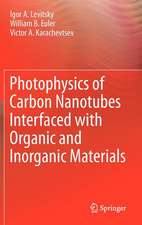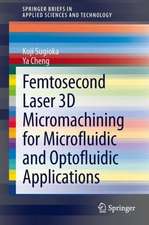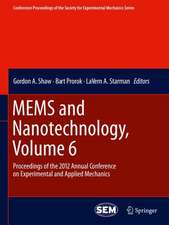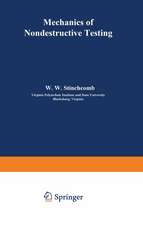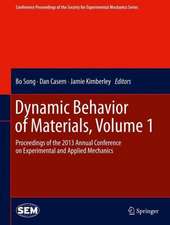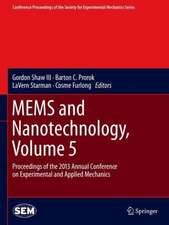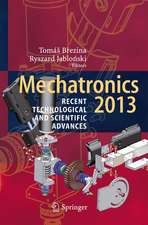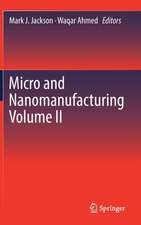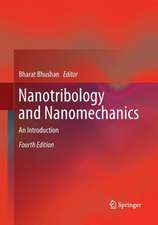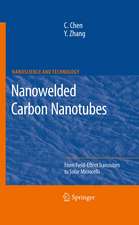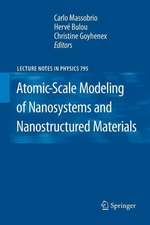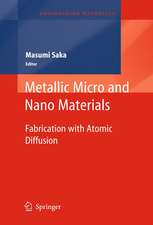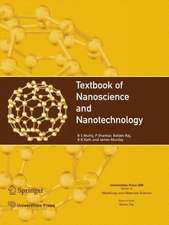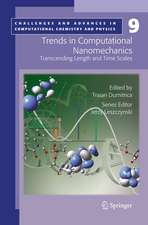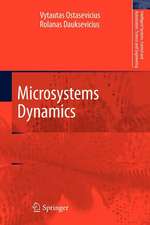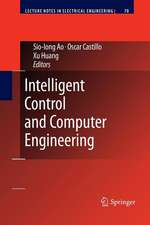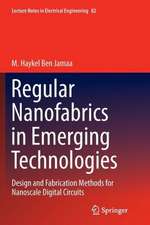Nanoparticles: An Emerging Technology for Oil Production and Processing Applications: Lecture Notes in Nanoscale Science and Technology, cartea 32
Editat de Nashaat N. Nassar, Farid B. Cortés, Camilo A. Francoen Limba Engleză Hardback – 17 feb 2022
Din seria Lecture Notes in Nanoscale Science and Technology
- 18%
 Preț: 971.01 lei
Preț: 971.01 lei - 18%
 Preț: 1115.46 lei
Preț: 1115.46 lei - 18%
 Preț: 956.81 lei
Preț: 956.81 lei - 15%
 Preț: 641.71 lei
Preț: 641.71 lei - 15%
 Preț: 636.30 lei
Preț: 636.30 lei - 15%
 Preț: 639.59 lei
Preț: 639.59 lei - 18%
 Preț: 952.89 lei
Preț: 952.89 lei - 18%
 Preț: 960.78 lei
Preț: 960.78 lei - 15%
 Preț: 654.77 lei
Preț: 654.77 lei - 18%
 Preț: 959.98 lei
Preț: 959.98 lei - 15%
 Preț: 648.24 lei
Preț: 648.24 lei - 18%
 Preț: 956.57 lei
Preț: 956.57 lei - 15%
 Preț: 650.69 lei
Preț: 650.69 lei - 18%
 Preț: 949.55 lei
Preț: 949.55 lei - 18%
 Preț: 1003.38 lei
Preț: 1003.38 lei - 18%
 Preț: 955.08 lei
Preț: 955.08 lei - 15%
 Preț: 642.18 lei
Preț: 642.18 lei - 15%
 Preț: 652.81 lei
Preț: 652.81 lei - 18%
 Preț: 1000.87 lei
Preț: 1000.87 lei - 15%
 Preț: 698.80 lei
Preț: 698.80 lei - 18%
 Preț: 1002.61 lei
Preț: 1002.61 lei - 15%
 Preț: 649.06 lei
Preț: 649.06 lei - 18%
 Preț: 1109.16 lei
Preț: 1109.16 lei - 18%
 Preț: 892.90 lei
Preț: 892.90 lei - 18%
 Preț: 1009.08 lei
Preț: 1009.08 lei - 18%
 Preț: 1120.37 lei
Preț: 1120.37 lei - 15%
 Preț: 641.71 lei
Preț: 641.71 lei - 18%
 Preț: 953.97 lei
Preț: 953.97 lei
Preț: 799.51 lei
Preț vechi: 975.01 lei
-18% Nou
Puncte Express: 1199
Preț estimativ în valută:
152.98€ • 159.73$ • 126.62£
152.98€ • 159.73$ • 126.62£
Carte tipărită la comandă
Livrare economică 05-19 aprilie
Preluare comenzi: 021 569.72.76
Specificații
ISBN-13: 9783319120508
ISBN-10: 3319120506
Pagini: 250
Ilustrații: VI, 518 p. 202 illus.
Dimensiuni: 155 x 235 mm
Greutate: 0.95 kg
Ediția:1st ed. 2021
Editura: Springer International Publishing
Colecția Springer
Seria Lecture Notes in Nanoscale Science and Technology
Locul publicării:Cham, Switzerland
ISBN-10: 3319120506
Pagini: 250
Ilustrații: VI, 518 p. 202 illus.
Dimensiuni: 155 x 235 mm
Greutate: 0.95 kg
Ediția:1st ed. 2021
Editura: Springer International Publishing
Colecția Springer
Seria Lecture Notes in Nanoscale Science and Technology
Locul publicării:Cham, Switzerland
Public țintă
ResearchCuprins
Chapter 1. Nanoparticle Preparation, Stabilization and Control over Particle Size.- Chapter 2. Nanoparticles as Potential Agents for Enhanced Oil Recovery.- Chapter 3. Nanoparticles as Adsorbents for Asphaltenes.- Chapter 4. Nanoparticles as catalyst for asphaltenes and waste heavy hydrocarbons upgrading.- Chapter 5. Effect of Pressure on Thermo- and Thermocatalytic Oxidation of Asphaltenes.- Chapter 6. Nanoparticles for Heavy Oil Upgrading.- Chapter 7. Nanotechnology Applications for Viscosity Reduction of Heavy and Extra-Heavy Oils: A Review.- Chapter 8. Using Nanoparticles as Gas Foam Stabilizing Agents for Enhanced Oil Recovery Applications .- Chapter 9. Influence of Surfactant Adsorption on Surface-Functionalized Silica Nanoparticles For Gas Foam Stability.- Chapter 10. Nanoparticles for Drilling, Cementing, Hydraulic Fracturing and well stimulation Fluids .- Chapter 11. Double Purpose Drilling Fluid Based on Nanotechnology: Drilling-Induced Formation Damage Reduction and Improvement in Mud Filtrate Quality .- Chapter 12. Evaluation from Laboratory to Field Trial of Nanofluids for CaCO3 Scales Inhibition in Oil Wells.- Chapter 13. Removal of Uranium-238 from Flowback Water of Hydraulic Fracturing Processes in Unconventional Reservoirs using Phosphorus- and Nitrogen-Functionalized Activated Carbons.- Chapter 14. Nanopaticles for cleaning up Oil Sand Process-affected Water.- Chapter 15. Challenges and Uncertainties of Using Nanoparticles in Oil and Gas Applications.
Notă biografică
Dr. Nashaat N. Nassar is a full professor in the Department of Chemical and Petroleum Engineering at the University of Calgary. He leads a large research group focuses on the development and application of naturally-derived nanomaterials in energy and the environment. He established a world-leading, industrially-connected Laboratory for Nanomaterials Research, and he is currently working with several national and international oil and gas companies to commercialize his research. Energy and environment applications are the dominant theme of his research activities to serve the Canadian community. Dr. Nassar’s research program emphasizes on the development of new technologies to improve the sustainability of unconventional hydrocarbon recovery processes and to advance the transition to low carbon energy sources. Dr. Nassar communicated his scientific knowledge through publishing 110 peer-reviewed journal papers, ten book chapters, two books, seven filed USA patents and six invention disclosures, and founded two spin off companies (NanoSoln Inc. and Carbon OxyTech Inc.). He has an h-index of 42 and his work has been cited 5179 times. He has received several prestigious awards and has delivered 50 invited talks in renowned national and international conferences and universities. Not only is he pushing the limits of science and technology in his field, but he does also so in collaboration with national and international top-ranked industrial sponsors, who understand and benefit from his unique approach to solving real world problems. Funding for his research has been through national programs such as NSERC DG, Engage, and Alliance, provincial funding through Alberta Innovates, industry contracts with Cenovus Energy, Seven Generation Energy, Executive Mat Services, and international funding through organizations such as CIATEC-PROFTECH-CONACYT-PEMEX, Mexico; Chevron USA Inc; QEERI in Qatar, and Werner Graupe International. He trained 11 postdoctoral fellows, 12PhD students, 26 Masters students and 40 undergraduate students. Many of his former HQPs are now employed in the Canadian energy industry and professors in international universities. Dr. Nassar serves on several administrative committees at UCalgary, mainly focused on teaching and professional development. Also, served as an expert reviewer for research grant proposals and peer-reviewed journals and acted as an associate editor for the Natural Gas Science and Engineering journal and Energies.
Dr. Farid B. Cortés obtained his title as a Chemical Engineer in 2004 from Universidad Nacional de Colombia. Dr. Cortés obtained an MSc in Chemical Engineering and Ph.D. in 2006 and 2009, respectively. He is a full professor at the Department of Chemical and Petroleum Engineering in Universidad Nacional de Colombia since 2011, being one of the youngest professors in receiving a full professorship in the faculty. Since its enrollment to the university, Prof. Dr. Cortés founded and directed the research group in Surface Phenomena-Michael Polanyi. He has published more than 140 papers (peer- review) in indexed journals (Q1 and Q2), 5 books and more than 10 book chapters, and more than 5 patents. He has participated in more than 50 scientific events at national and international levels, receiving multiple recognitions including Great Winner in the Colombian Petroleum Conference in 2019 organized by the Colombian Association of petroleum engineers. He has the leader of about 70 projects in research and development, innovation, as well as social responsibility modality. He has been the director of more than 50 undergraduate and postgraduate theses. He is editor in Processes Journal and guest editor in several high-quality scientific journals. Also, during 2020, he was Vice-dean of research and development and Dean in charge of the Faculty of Mines of the Universidad Nacional de Colombia. Dr. Cortés participated in the first interventions in formation damage andenhanced oil recovery with nanotechnology worldwide, with an oil production accumulated larger than 4 million oil barrels using nanofluids and nanoparticles.
Dr. Camilo A. Franco is a petroleum Engineer and Ph.D. in engineering-energy systems from the Faculty of Mines of the National University of Colombia - Medellín. He also holds a Master's degree in plastic and visual arts at the same university. He has more than 9 years of experience developing nanotechnology for applications in the oil and gas industry. He has published more than 80 scientific articles, 10 book chapters, 2 patents and 100 national and international presentations. Also, he has won more than 10 awards, including Great Winner in the Colombian Petroleum Conference in 2019 organized by the Colombian Association of petroleum engineers. Currently is an associate professor in the Department of Processes and Energy at the Faculty of Mines of the Universidad Nacional de Colombia. He has focused his research on nanoscience and nanotechnology for the oil and gas industry, with a special emphasis on thermal processes for enhanced oil recovery. Currently, he directed more than 5 research projects that include investments of more than 2M USD in research. These projects have resulted in the training of quality human talent and patents and have also been a pioneer in applying nanotechnology in real applications in the field. These projects have strengthened the university's laboratories and have allowed to expand knowledge in the oil and gas and open new frontiers towards the applicability of nanotechnology in other areas. His leadership has promoted the take-off of disruptive technologies that are unique in the world. Additionally, he looks to break the transdisciplinary barrier, including STEAM strategies, especially linking the arts to engineering. Through this, he promoted the “Crudo y pesado” (Crude and heavy) project focused on revealing the daily life of oilfield workers in Colombia. Also, he es a member of the STEAM committee of the WIN program of the SPE Colombian Section.
Dr. Farid B. Cortés obtained his title as a Chemical Engineer in 2004 from Universidad Nacional de Colombia. Dr. Cortés obtained an MSc in Chemical Engineering and Ph.D. in 2006 and 2009, respectively. He is a full professor at the Department of Chemical and Petroleum Engineering in Universidad Nacional de Colombia since 2011, being one of the youngest professors in receiving a full professorship in the faculty. Since its enrollment to the university, Prof. Dr. Cortés founded and directed the research group in Surface Phenomena-Michael Polanyi. He has published more than 140 papers (peer- review) in indexed journals (Q1 and Q2), 5 books and more than 10 book chapters, and more than 5 patents. He has participated in more than 50 scientific events at national and international levels, receiving multiple recognitions including Great Winner in the Colombian Petroleum Conference in 2019 organized by the Colombian Association of petroleum engineers. He has the leader of about 70 projects in research and development, innovation, as well as social responsibility modality. He has been the director of more than 50 undergraduate and postgraduate theses. He is editor in Processes Journal and guest editor in several high-quality scientific journals. Also, during 2020, he was Vice-dean of research and development and Dean in charge of the Faculty of Mines of the Universidad Nacional de Colombia. Dr. Cortés participated in the first interventions in formation damage andenhanced oil recovery with nanotechnology worldwide, with an oil production accumulated larger than 4 million oil barrels using nanofluids and nanoparticles.
Dr. Camilo A. Franco is a petroleum Engineer and Ph.D. in engineering-energy systems from the Faculty of Mines of the National University of Colombia - Medellín. He also holds a Master's degree in plastic and visual arts at the same university. He has more than 9 years of experience developing nanotechnology for applications in the oil and gas industry. He has published more than 80 scientific articles, 10 book chapters, 2 patents and 100 national and international presentations. Also, he has won more than 10 awards, including Great Winner in the Colombian Petroleum Conference in 2019 organized by the Colombian Association of petroleum engineers. Currently is an associate professor in the Department of Processes and Energy at the Faculty of Mines of the Universidad Nacional de Colombia. He has focused his research on nanoscience and nanotechnology for the oil and gas industry, with a special emphasis on thermal processes for enhanced oil recovery. Currently, he directed more than 5 research projects that include investments of more than 2M USD in research. These projects have resulted in the training of quality human talent and patents and have also been a pioneer in applying nanotechnology in real applications in the field. These projects have strengthened the university's laboratories and have allowed to expand knowledge in the oil and gas and open new frontiers towards the applicability of nanotechnology in other areas. His leadership has promoted the take-off of disruptive technologies that are unique in the world. Additionally, he looks to break the transdisciplinary barrier, including STEAM strategies, especially linking the arts to engineering. Through this, he promoted the “Crudo y pesado” (Crude and heavy) project focused on revealing the daily life of oilfield workers in Colombia. Also, he es a member of the STEAM committee of the WIN program of the SPE Colombian Section.
Textul de pe ultima copertă
This book assesses the current development and potential applications of nanoparticle technology in oil industry and explores new research directions in this frontier field. It outlines the theory and practical challenges of the nanoparticle colloidal behavior in oil matrixes and aqueous solutions, the interactions between rock and nanofluid, nanoparticles and asphaltenes, and the surface phenomena relevant to the application of this technology. The book also describes the transport behavior of nanoparticles in oil/sand media for in-situ upgrading and recovery of heavy oil. Currently, the main objectives of applying nanoscale materials in oil industry are the remediation of formation damage, the improvement of energy efficiency, the abatement of environmental footprints and the increment of recovery factors of oil reservoirs, to name a few. The book consists of 15 chapters with contributions by leading experts in the topics of fabrication methods, opportunities and challenges in theoil & gas industry, modeling and application of nanofluids in the field and environmental applications of nanoparticles. The growing demand for oil has led to the need to exploit unconventional oil resources, such as heavy and extra-heavy crude oil. However, in the current context, upgrading and recovery of heavy oil are highly energy and water intensive, which consequently results in environmental impacts. Therefore, it is necessary to search for new ideas and alternatives in the field of in-situ and ex-situ upgrading and recovery to improve current technologies and make them both environmentally sound and cost-effective. Research conducted by the authors and numerous other researchers has shown that nanoparticle technology could be successfully employed for enhancing the upgrading and recovery of heavy oil with cost-effective and environmentally friendly approaches. Examples on the applications of nanoparticles in heavy oil include the adsorption, oxidation, and gasification/cracking of asphaltenes, a problematic constituent present in heavy oils; in-situ upgrading of the Athabasca bitumen by multi-metallic in-situ prepared nanocatalysts; the inhibition of precipitation and deposition of asphaltnes; and the enhanced perdurability against asphaltene damage in oil sands porous media by injection of nanofluids; sequestration of oil from spilled by nanoparticles, cleaning up oil sand process affected water by integrating nanoparticle with conventional treatment processes, etc.
Caracteristici
Translates the findings from research studies in nanoscience and nanotechnology into potential practical applications Provides an overview of current applications and highlights future prospects and challenges Includes several examples of environmental applications of nanoparticles




